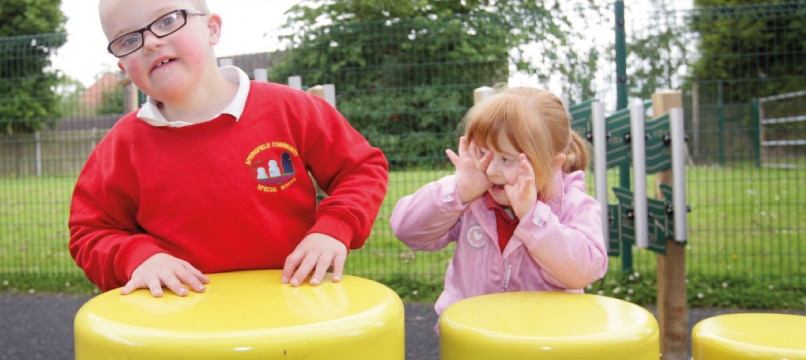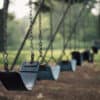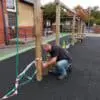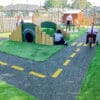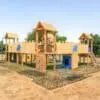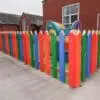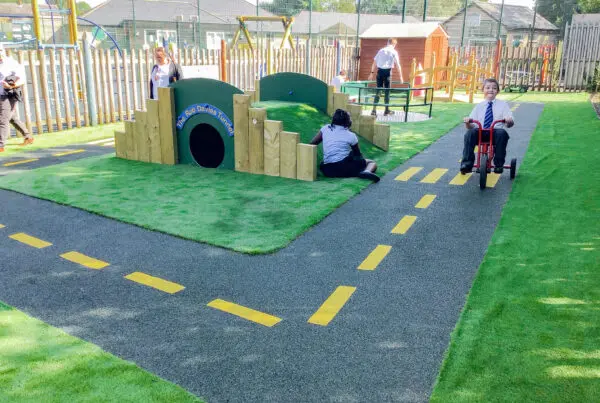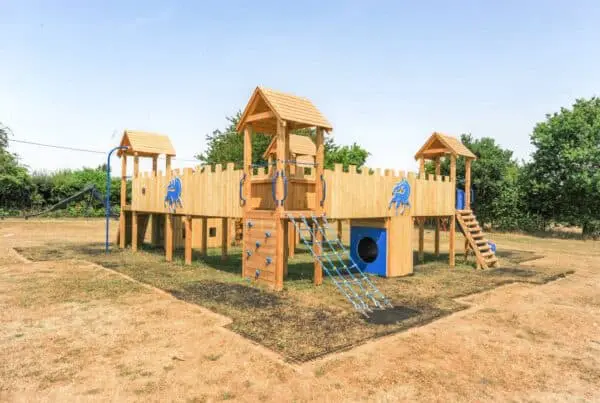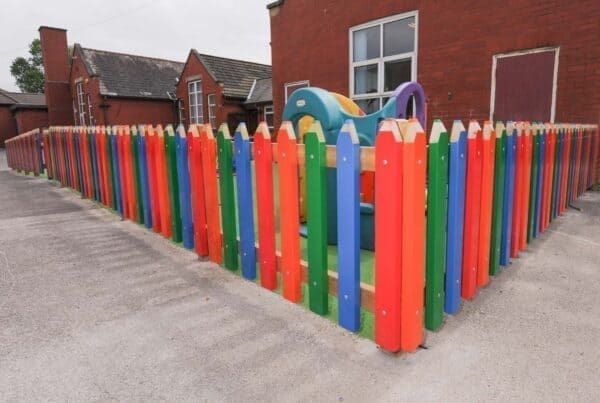With the correct guidance, creating an outdoor environment to support learning, while offering hours of happy, safe play, can be easily achieved. Julie Pearce, Play Space Consultant at Sovereign, explains what should be considered when planning and designing a rewarding play and learning area for children with SEN.
The abilities of young people with SEN can differ dramatically from child to child – and this inevitably impacts the choices made by parents, teachers and carers when considering the best outdoor facilities for use by all children. This is especially true when selecting play equipment, which, depending on setting, may be required to serve hundreds of young people each year.
Each disability has a different impact on the way children engage in recreation and as a result, access to play facilities can be difficult for families and carers of disabled children. This is no doubt frustrating and de-motivating to young people who are then unable to enjoy and benefit from playtime.
With this in mind, it’s important to create a play or learning space that is easily accessible to all. Whether you aim to create a new play area or replace existing equipment, consideration of the following factors will help you undergo your project.
What is your grand plan?
A common problem faced in almost all playground projects, is the temptation to jump straight into selecting the play equipment you’d like to provide. The best play and learning zones are those that have been well thought through – so, before you get started, the first step is to develop your “grand plan”. Without this, you’re at risk of undergoing a play equipment installation before you have considered all – and possibly better – options.
The grand plan involves setting your project aims and understanding what you want to achieve from your outdoor environment. Once you know this, you will be better prepared in choosing the most appropriate play equipment to support your requirements, along with consideration of your available space, budget and safety provisions.
Your learning outcomes
While play equipment is often considered as a means of enjoyment to children, it can be used in a number of ways to create a resourceful learning environment. From promoting imaginative, creative and co-operative development to providing sensory experiences, the ranges of play equipment available are vast and can be used to deliver a range of learning outcomes for children with SEN.
Learning through play is the result here and this has many benefits. For example, with the right facilities, inspiring children to play in an outdoor environment can result in experiences that promote physical, social and personal skills, while broadening horizons, promoting positive values and helping young people to develop soft skills such as confidence and self-esteem; all positive learning outcomes that can be influenced through play.
There is one learning outcome in particular that is very important to consider for children with special educational needs – and this is inclusiveness. When developing a play area, consider whether your chosen equipment caters for the inclusion of all children. This is to ensure all young people feel the same in play, regardless of individual needs.
Most SEN settings think of play provision along the lines of the EYFS framework – so when you plan your project, think about providing opportunities for role play, imaginative play, understanding the world, expressive arts and design. All of these learning outcomes can be achieved through learning and playing outdoors and are incorporated inclusively, no matter what the children’s needs. The added benefit is that delivering this in an outdoor environment can be extremely powerful, and valuable, to pupils who are hard to reach or who do not respond well to traditional teaching methods.
For schools, learning outdoors can also support the government’s LOtC Manifesto, which aims to provide all young people with a wide range of experiences outside the classroom. The experience of learning outside the classroom contributes to factors such as opening a child’s eyes to the wonders of art, heritage, culture, adventure and the natural world, not to mention the joys of experiencing the Great British Seasons. This can be achieved by delivering lessons outdoors, although with the right outdoor facilities; just by encouraging regular use will naturally support LOtC.
Choosing play equipment
When exploring the play equipment that is available and beneficial to young people with SEN, it’s important to keep your grand plan and learning outcomes in mind. Play equipment comes in many varieties, and nowadays, many pieces of equipment are designed with features to support children with disabilities.
Sensory play equipment
Whether through sight, touch, sound or even smell, the opportunities for play and learning are endless for children who enjoy interacting through their senses. Sensory play can be enjoyed by children of all ages and abilities and therefore, using sensory elements is one of the best ways to enhance a setting that is inclusive to all.
- Music and activity play panels: Easily visible musical panels or activity play panels with pieces that are easily manoeuvred provide perfect sensory experiences – think noises, textures, smells, gross motor skill development, all on a much larger scale than one might achieve indoors.
- Sensory pathways – installing a sensory pathway made up of textured elements can encourage different sensations under foot, or the wheels of a wheelchair. Pathways can also benefit from living willow tunnels to provide another dimension, as well as natural shade.
- Planters – the installation of sensory planters can encourage digging, planting and growing, while enhancing smells and exploration of a variety of materials, such as sand, shells or pebbles.
- Sand and water play – Encouraging young people to explore the senses of touch and sight, imagine the opportunities for sand and water play. Being outside, this can be delivered on a small or large scale. Activities like this have no boundaries and require no skill, but provide a great method of learning outside the classroom.
Traditional play equipment
More traditional play equipment can too encourage inclusive play. Traditional options include basket swings with large scooped seats to provide greater stability, as well as sunken trampolines that reduce jumping heights to a safe level. Play towers designed to a lower, safer height with an assortment of activity panels are also an option.
There are also pieces of play equipment that have been modified to ensure inclusivity, for example DDA compliant roundabouts are installed flush to the floor to allow easy wheelchair access.
Designing your play space
Once your aims have been set and you have researched suitable play equipment, it’s time to get the whole vision down on paper.
Visualise your outdoor area and consider the placement of play facilities and furniture. Consider story telling areas or sheltered seating areas, sensory play zones and areas for physical activity. By designing your play area this way, you are more likely to identify free space that can be used in different and more effective ways. While doing this, try to locate areas that can be utilised for wheelchairs, think about the safety of items grouped close together and also, consider whether safer surfacing or fencing to separate play and learning areas is required.
Next, consider your budget and opportunities for fundraising. Remember, your project can always be implemented in phases to give you time to fundraise for your play equipment.
With the consideration of all these things, you are more likely to undergo a successful project that can provide hours of happy, resourceful play with many benefits. When you’re ready to speak to a playground equipment company, don’t be frightened to request they help you with your grand plan. The planning and design process can vary between providers; however plans and designs are often free of charge.
Free consultation
If you need advice and would like to talk to one of our experts, give us a call on 01702 291129 or email [email protected].
